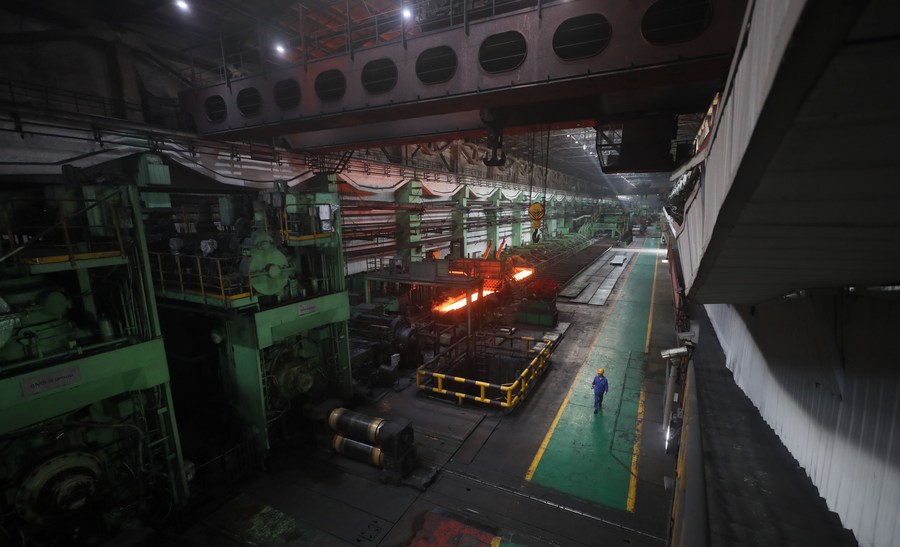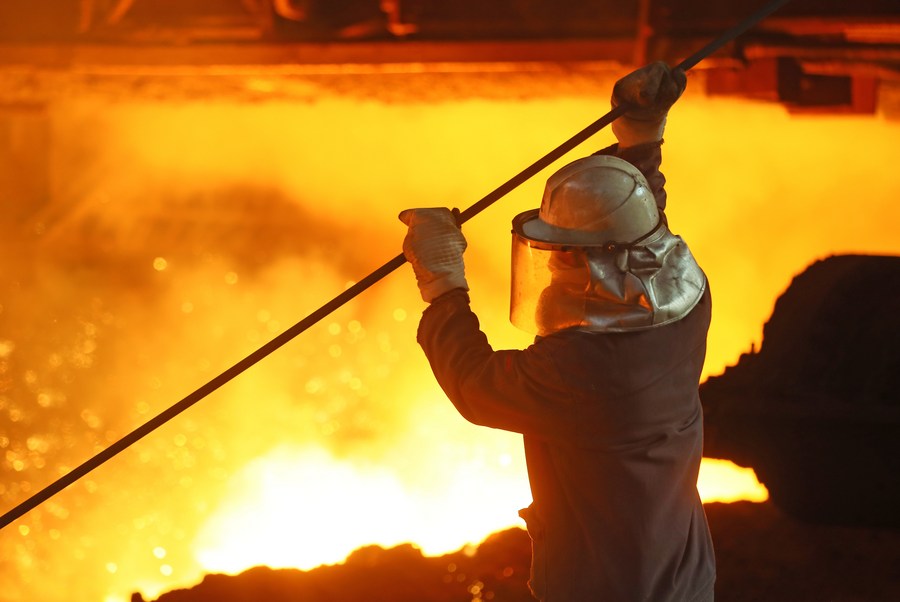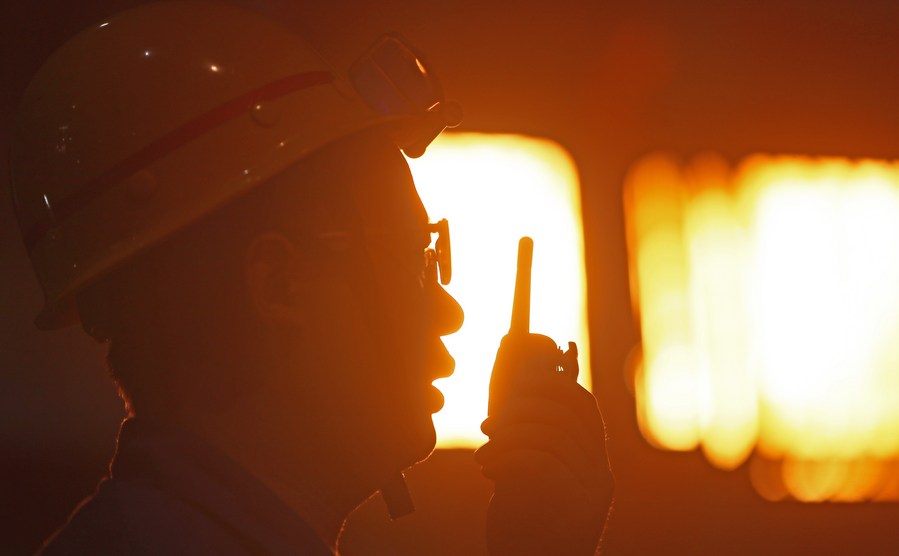SHENYANG, Aug. 20 (Xinhua) -- China's two major steelmakers, Ansteel and Ben Gang Group Corporation, inked a deal on Friday to kick off their merger and restructuring that will create the world's third-largest steelmaker.
According to the deal, the owner of Ben Gang -- Liaoning Province's State-owned Assets Supervision and Administration Commission -- will transfer a 51-percent controlling stake in the steelmaker to Ansteel, and Ben Gang will become a subsidiary of Ansteel.
After the merger, Ansteel will have an annual production capacity of 63 million tonnes of crude steel, ranking third worldwide after China Baowu Steel Group Corporation Limited and Luxembourg-headquartered ArcelorMittal.
The merger will increase the consolidation of the steel industry, step up high-quality development of the industry, and forge a world-class steel firm, according to a statement released by Ansteel, or Angang Steel Co., Ltd.
"This is a milestone in the development of Ansteel," said Tan Chengxu, chairman of Ansteel on Friday.

A worker walks at a factory of Ben Gang Group Corporation in Benxi, northeast China's Liaoning Province, Aug. 18, 2021. (Xinhua/Yang Qing)
Founded in 1916 and 1905 respectively, Ansteel and Ben Gang are both located in northeast China's Liaoning Province, and their major production bases are 60 km apart.
"After the realignment, we will realize resource integration and coordinated development in R&D, procurement and sales, making a contribution to the revitalization of Liaoning and northeast China," said Tan.
"The total number of employees in Ansteel after the restructuring is about 200,000. We promise not to cut staff," he said.
By 2025, Ansteel targets an annual output of about 70 million tonnes of crude steel, 50 million tonnes of iron concentrate, and around 300 billion yuan (about 46.3 billion U.S. dollars) of operating income.
The restructuring will enter into the anti-monopoly review of related government departments.

A worker works at a workshop of Ansteel in Anshan City, northeast China's Liaoning Province, Aug. 19, 2021. (Xinhua/Yang Qing)
China has been the world's leading steel producer for years. Over the past 20 years, China's annual crude steel production has risen to 1.05 billion tonnes.
However, the steel industry is currently facing the bottleneck of excess capacity, low-level supply, and high dependence on external steel resources.
To address concerns about a potential glut and reduce emissions in a heavily polluting industry, China is encouraging a realignment of the country's crowded steel market.
During the 13th Five-Year Plan period (2016-2020), China's steel industry has been promoting the supply-side structural reform and accelerated mergers and restructuring, and the efforts have paid off.
In 2020, the crude steel output of the top 10 steel enterprises in China accounted for 39 percent of the total national output, an increase of 4.6 percentage points over 2015, according to the China Iron and Steel Association.

A worker works at a factory of Ben Gang Group Corporation in Benxi, northeast China's Liaoning Province, Aug. 18, 2021. (Xinhua/Yang Qing)
According to a plan released by the Ministry of Industry and Information Technology, by 2025, China will build a number of super-large steel conglomerates, and its top 10 steel enterprises will contribute to 60 percent of the country's steel output.
Meanwhile, since the beginning of the 14th Five-year Plan period (2021-2025), China has been accelerating the construction of the mechanism and policy system for carbon peaking and neutrality.
The steel industry, which has the largest carbon emissions among the 31 categories of China's manufacturing sector, is expected to be the first to reach carbon peaking and neutrality.
According to Ansteel, it will strive to reach its carbon peak goal by around 2024, one year earlier than the steel industry as a whole.
Currently, Ansteel's emissions per tonne of steel are at the national average level, while Ben Gang is higher than the national average. Both companies are expanding the application of energy-saving and emission-reduction technologies.






